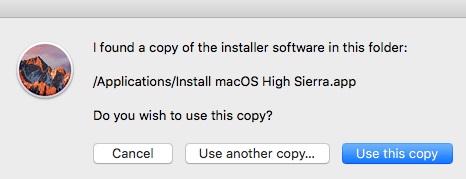

- #RUFUS SIMILAR FOR MAC MAC OS X#
- #RUFUS SIMILAR FOR MAC INSTALL#
- #RUFUS SIMILAR FOR MAC UPDATE#
- #RUFUS SIMILAR FOR MAC PC#
- #RUFUS SIMILAR FOR MAC PLUS#
When the USB drive is ready you can plug it in you mac and press alt (option) while booting, you have inserted a firmware password, it will ask you to unlock the firmware by inserting that password, else it will take you to all the bootable drives, including your USB device.
#RUFUS SIMILAR FOR MAC PLUS#
Here things start to get a little tricky.įirst of all you have to flash the image on a USB drive, I recommend etcher, that works on everything (Mac, Linux and Windows too) it's extremely easy to use and you just need to select the drive and the image and etcher will do everything by itself, plus it's free here.
#RUFUS SIMILAR FOR MAC MAC OS X#
In this case, you have to download the dmg file, that can be found on the web, for example, one websites that provides some macOS and Mac OS X is this (for El Capitan, if you need another version, I'm sorry but you have to search for it).
#RUFUS SIMILAR FOR MAC INSTALL#
In most of the new mac computer, you can just press cmd+r while booting and the mac will automatically download everything you need to install the system, but the oldest does not have this tool. The first thing you have to do is make sure what model you have (the year when your computer has been released) then check on the official apple website to see what is the latest macOS or Mac OS X version available for you computer. I had this problem with a friend computer, it was an old iMac and I'll tell you it is not going to be easy. So basically, the USB drive cannot have any high level formatting, the Windows system should detect the drive as "not formatted" for this to work, which it will if prepped right with Diskpart. When I tried to inject the image, Transmac told me that the drive was "write protected".

Note: I use "Rufus" for all other USB writing and formatting for Windows systems, it's a great app, but I had previously tried to format the drive as GPT using that, as a Fat32 partition. DISKPART> convert gptĭiskPart successfully converted the selected disk to GPT format. DISKPART> cleanĭiskPart succeeded in cleaning the disk. (Find the disk number) DISKPART> select disk x (from result of List Disk)ĭisk x is now the selected disk.

Here are the Diskpart commands used to prep the Flash Drive, just to have them here in case my Link does not work: diskpart I've been trying to post this to confirm that it works for some time, I just hope it helps someone else, because it is a very easy solution. Someone had reported that the method for using DISKPART did not work, but I have done this twice and it works remarkably well, and it's the only method I could find to create a Mac-Bootable Flash. I used TransMac on Windows 7 to restore the image file I had to the Flash Drive, it created a bootable Mac image on my flash drive. Dryden's Link, I was able to use the Diskpart command to clean and prep a GPT partition on a flash drive for an OSX Mavericks install image. I was never able to write a Mac installer image to my Flash Drive and have it bootable, unless I did it on a Mac.
#RUFUS SIMILAR FOR MAC PC#
As of late, making an installer using a Windows PC has had a high rate of failure.I know this question is old but it is still valid. Use this and either these instructions or this app to make your bootable installer on a Mac for best results.
#RUFUS SIMILAR FOR MAC UPDATE#
You either downloaded the helper utility for getting the actual 10.11 installer or the update that requires you to already be on 10.11. Once she is safely backed up, you can download a copy of the OS you wish to use (from 10.7 Lion up to 10.15 Catalina for the 2012 MBP) and create a bootable USB thumb drive from which you can install the OS onto the new disk (after formatting) using the createinstallmedia command in Terminal or a GUI overlay for that command like DiskmakerX () or Install Disk Creator (macdaddy.io). If for any weird reasons that doesn't work (usually involving being in a country where Apple has removed Lion from their servers) the next option to consider is the classic Lion DiskMaker (which went on to support more than just Lion) from. How do you revert back from macOS Big Sur to macOS Lion? What you need to do is continue with the original plan of making a bootable installer, either by using Terminal or DiskMaker X, then have the installer volume and SSD both connected to the Mac you will be eventually putting the SSD intro, and proceed with the installation.

The MacBook Air shipped with macOS Sierra (10.12), so of course a 10.10 installer will not run on it. Trying to install Mac OS X El Capitan on SSD Every person I’ve read about using TransMac within the last year or two has had problems. Either use Terminal as this instructs or DiskMaker X, both on another Mac, to create the installer.


 0 kommentar(er)
0 kommentar(er)
